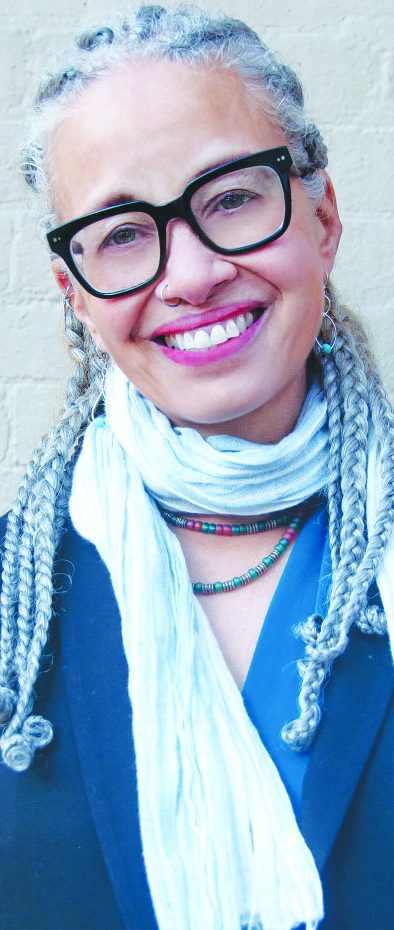Kaitlyn Finchler
Staff writer

Black women have a maternal mortality rate 2.9 times that of white women in the United States, according to the National Institutes of Health.
Racial disparities in healthcare have always been an issue. In Under the Skin: The Hidden Toll of Racism on Health in America, author Linda Villarosa dives into this topic and more, as she will in her Chautauqua Literary and Scientific Circle presentation on the book at 3:30 p.m. today in the Hall of Philosophy.
“Our communities of color are historically marginalized. Due to segregation, it’s made our communities have less access to healthy food, clean water, outdoor exercise, clean air and even jobs and education.”
LINDA VILLAROSA
Author,
Under the Skin: The Hidden Toll of Racism on Health in America
In addition to being the CLSC selection for Week Four, Under the Skin was the 2023 pick for the Chautauqua County Book Read, now in its second year. In April, the YWCA of Jamestown and the Institution — through its Mirror Project initative; Inclusion, Diversity, Equity and Accessibilty Office; and the African American House — held several digital and in-person book discussions across the county. Now, Villarosa’s lecture is part of Chautauqua County Day, which features free gate admission to county residents.
The biggest point in the disconnect she explores in her book, according to Villarosa, is America’s status of being the wealthiest country in the world, with some of the worst health outcomes.
“Maternal mortality in this country is on the rise and it ends with life expectancy,” Villarosa said. “We have shorter lifespans than other countries and our COVID pandemic was worse.”
Villarosa previously worked at Essence, where she covered health issues for people of color, particularly Black Americans.
“Our health outcomes are poor compared to other groups of color – extremely poor,” she said. “We’re doing something wrong and, in general, going about it the wrong way – solving the problem in a way that isn’t helping, as far as life expectancy and maternal mortality.”
The problem is not only healthcare itself, she said. It’s also how much is spent on healthcare, what happens in doctor’s offices and how people in healthcare go about solving problems.
“If you talk to people in the community, many of them are suffering,” she said.
Villarosa said another issue is weathering — premature aging in Black people — due to constant discrimination day after day as part of a marginalized group.
“Our communities of color are historically marginalized,” she said. “Due to segregation, it’s made our communities have less access to healthy food, clean water, outdoor exercise, clean air and even jobs and education.”
One way Villarosa said all people can help address racial disparities in healthcare is to always have an advocate with them when at a healthcare facility.
“I think (advocacy) should be part of healthcare education for all kinds of nursing students who are going to be physicians (or) midwifery students,” she said. “Part of it should be ‘What is your role in making the community that you serve better before they get into the hospital system?’ ”
In 2018, she explored disparities in Black maternal and infant mortality in an article for The New York Times headlined“Why America’s Black Mothers and Babies are in a Life-or-Death Crisis.”
Villarosa originally started out writing about doulas — women who are employed to provide guidance and support to pregnant women during labor. She followed the experience of a pregnant woman named Simone. When she saw Simone being treated “very badly” by medical professionals, Villarosa was compelled to adjust her focus.
“I changed the story to be about her experience and why her treatment wasn’t good, even with a doula in the room,” Villarosa said. “People were so shocked.”
Villarosa said this struck a chord in readers who had previously only heard about the issues in a “public health bubble.”
Infant mortality is twice as high with Black parents, and Villarosa said the core issue is “a lack of access to health care or poverty.”
Then, she found a statistic that showed a Black woman with a college education — even someone who may be a doctor or lawyer — is more likely to die or almost die from a pregnancy-related cause than a white woman with an eighth-grade education.
Villarosa said she wants her audience to realize the problems and how far back they go, while not blaming individual people for “this problem that really is about what’s going on in our country as a whole.”
“If we’re dealing with the problem incorrectly and not thinking something is happening to us in society — and in a healthcare system — that education and access to healthcare doesn’t solve, that’s a different problem and calls for a different solution,” she said.




